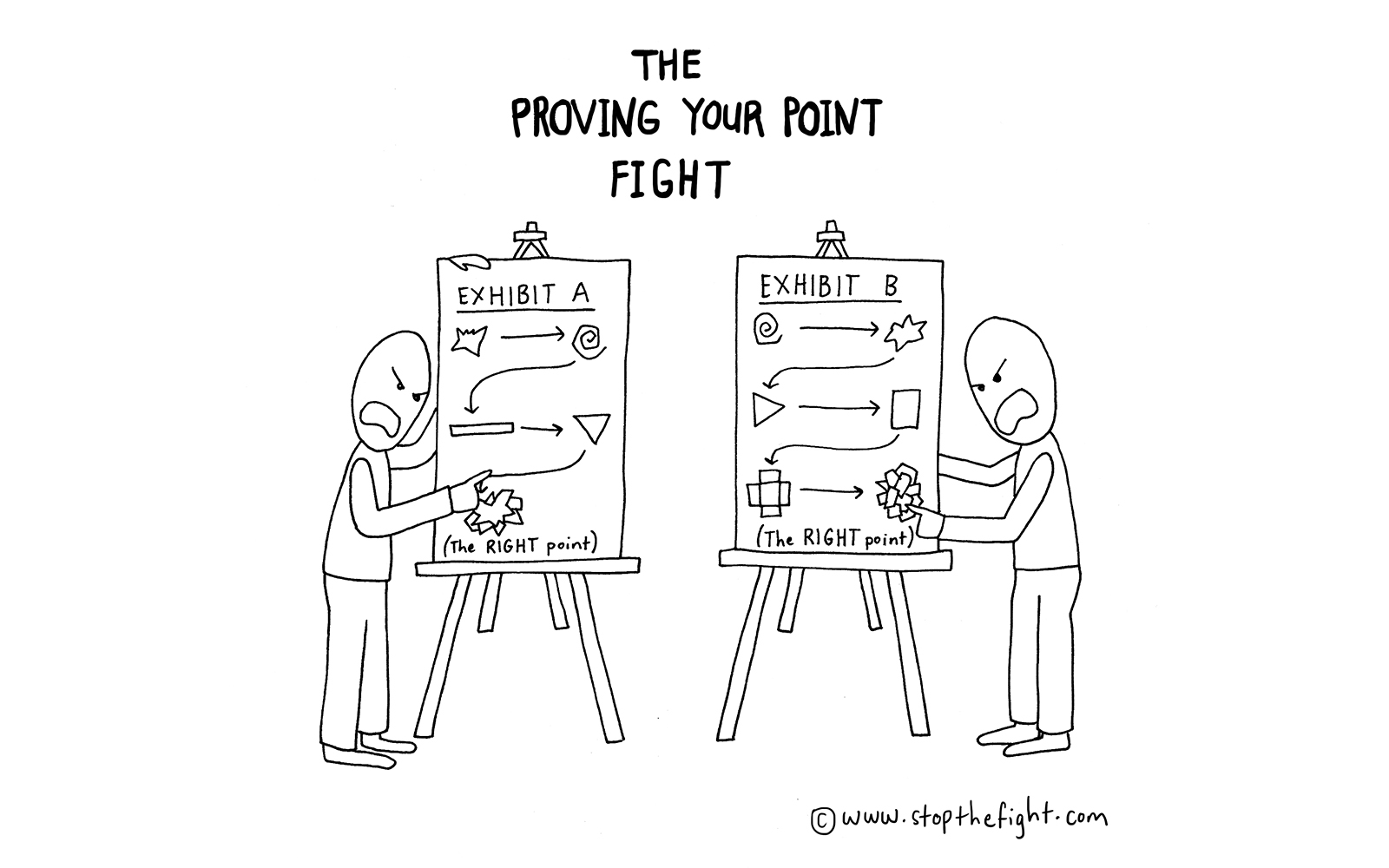This might strange, but I had to FIND my argument.
When we are writing research papers, most often we have the mindset of proving something. Maybe you feel strongly about a specific claim, taking one side of a debate, or compiling evidence around a single topic. Whatever our goal is, we come in with a specific objective, and aim to support or validate that with proof.

Proving your point like…(Source)
Our research paper was different for me. We had just finished an annotated bibliography, so I had compiled many different sources to understand the conversation surrounding what I was interested in, which in this case was on-campus programs. I had a pile of articles in front of me, but that doesn’t mean I had a specific argument. So I had to find one.
The first step to finding my argument was what we called in class “finding the territory.” This meant synthesizing the sources I had found and understanding the general sense of what previous research addressed. My “territory” was many articles that concluded that hands-on experiences is useful for the undergraduate experience, and many case studies that back this up by showing programs could enhance student engagement.
Second, was “finding the gap.” What is a niche in the territory which hasn’t been covered, or is there anything I could add to the conversation? When I thought about what I could personally contribute, I imagined my own campus. What can SCU improve in regards to their programs. My survey clearly showed that students aren’t effectively getting involved on-campus. Is there some connection I can make to the theories and case studies I have read in the sources I have found?

Where is my gap?
Applying the information I have found to improve SCU’s programs; that is the argument I found.
